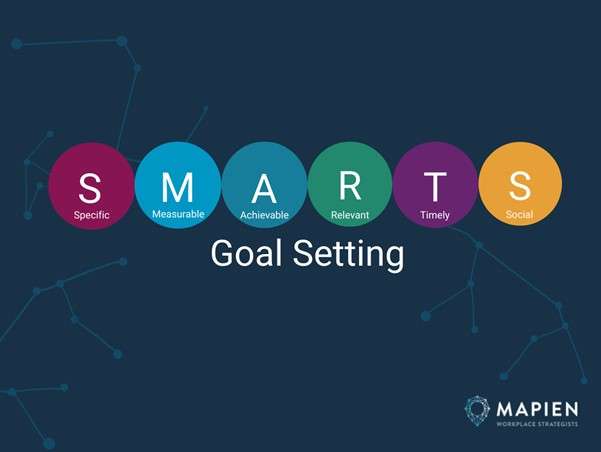In the fast-paced business world, setting the right goals is the key to success. Not all goals are the same. For a goal to be effective, it should adhere to the SMART criteria: Specific, Measurable, Achievable, Relevant, and Time-bound. This article will explore in depth how setting SMART goals can propel your business growth to new heights.
By understanding and implementing the concept of SMART goals, you will have a clear roadmap to achieving business success. Let’s explore more about how SMART goals can change the way you manage and grow your business.

Understanding the Concept of SMART Goals
What are SMART Goals?
SMART goals are a framework used to set clear and measurable goals in business. The idea was introduced for the first time by George T. Doran in 1981 in his article titled “There’s a S.M.A.R.T. Approaches in Formulating Management Goals and Objectives. Since then, the concept has been widely adopted across industries and organizations.
SMART stands for Specific, Measurable, Achievable, Relevant, and Time-bound. Each of these elements plays a vital role in creating effective and achievable goals. By implementing SMART principles, businesses can transform abstract goals into concrete action plans.
Why Are SMART Goals Important for Business Growth?
SMART goals have a significant impact on business growth because they provide clarity and focus. When goals are clearly defined, the entire team can work together more effectively to achieve them. Measurable goals allow businesses to track progress and make adjustments as needed. Achievable goals motivate employees and prevent frustration.
Goal relevance ensures that efforts are aligned with the company’s vision and mission. At the same time, time-sensitive goals foster a sense of urgency and assist in resource management. By combining all these elements, SMART goals become a powerful tool for driving sustainable business growth.
Elements of SMART Goals
Specific
Specific goals represent the initial stage in establishing SMART goals. Objectives must be clear and unambiguous. To create specific goals, you need to answer the “5W” questions: What, Why, Who, Where, and Which. For instance, rather than stating ‘Boost sales,’ a clearer objective could be ‘Enhance sales of product X by 20% in market Y through a digital marketing campaign.”
Specific goals help the entire team understand exactly what they want to achieve. This removes ambiguity and guarantees that everyone is aligned toward the same objective. Specific goals also make it easier to identify the actions needed to achieve the goal.
Measurable
The second element of a SMART goal is that it is measurable. Measurable objectives enable you to monitor progress and determine when the goal has been accomplished. To create measurable goals, you need to set clear criteria for measuring progress. This could be a number, percentage, or other key performance indicator (KPI).
An example of a measurable goal is “Increase customer retention rate from 70% to 85% in 6 months.” By having clear metrics, you can easily assess whether you are on track or need to adjust your strategy. Measurable goals also help motivate your team because you can see concrete progress.
Achievable
Achievable goals are the third element of SMART. While it’s important to have challenging goals, they should still be realistic and achievable. Goals that are too ambitious can lead to frustration and demotivation, while goals that are too easy won’t encourage growth. To determine whether a goal is achievable, consider your available resources, market conditions, and the capacity of your team.
For example, if your business is just entering a new market, it may not be realistic to aim for 50% market share in one year. A more achievable goal might be “Achieve 10% market share in the first 12 months in a new market.” Achievable goals help build confidence and momentum within your team.
Relevant
Relevance is the fourth element of a SMART goal. A pertinent objective should be in harmony with your long-term vision and overarching business goals. Every goal must play a role in the overall growth and success of your organization. To ensure relevance, ask yourself: Is this goal important to the business today? Does it correspond with our long-term objectives?
An example of a relevant goal is “Increase production efficiency by 15% to support the company’s expansion plans.” This goal is relevant because it directly supports the company’s growth strategy. Relevant goals help focus resources and efforts on areas that truly matter to the success of your business.
Time-bound
The final element of a SMART goal is time-bound. Each goal should have a clear time frame for its achievement. Without a time limit, goals can lose their urgency and become forgotten in the hustle and bustle of everyday life. A time limit creates a sense of urgency and helps in effective planning and allocation of resources.
An instance of a time-sensitive objective is “Introduce a new product line within six months.” With clear time limits, teams can plan the necessary steps and set deadlines for each stage. Time-bound goals also make it easier to evaluate performance and adjust strategies if necessary.
Closing
Setting SMART goals is an essential strategy for driving business growth. By clearly defining goals that are Specific, Measurable, Achievable, Relevant, and Time-bound, businesses can foster a focused and motivated team. This structured approach not only clarifies expectations but also enhances collaboration, ensuring that everyone is aligned and working towards the same objectives for success.
Ultimately, the implementation of SMART goals can significantly impact a business’s trajectory. As you integrate these principles into your planning processes, remember to regularly review and adjust your goals. This will ensure that your business remains agile, responsive to changes, and well-equipped to navigate the dynamic landscape of today’s marketplace.